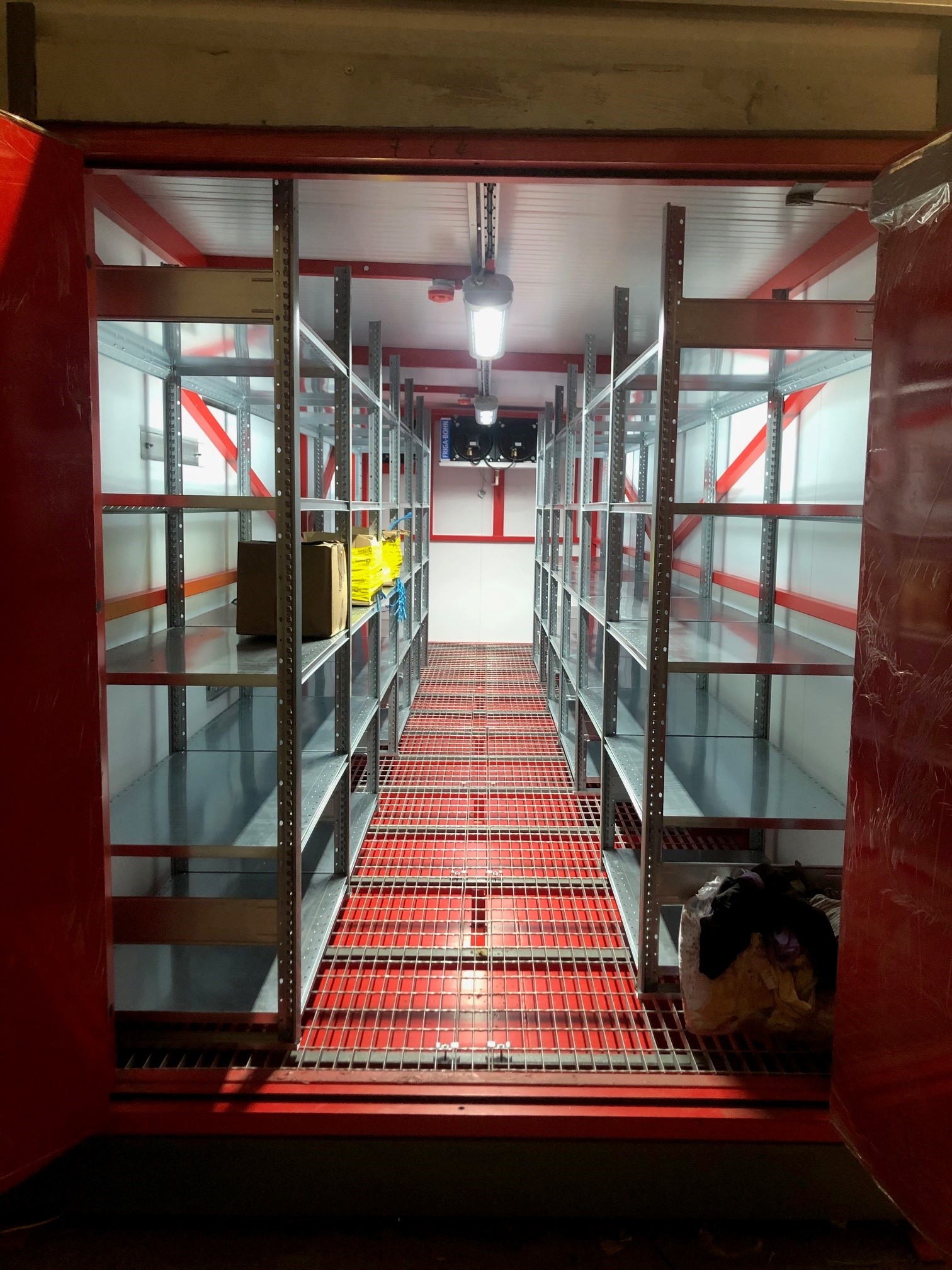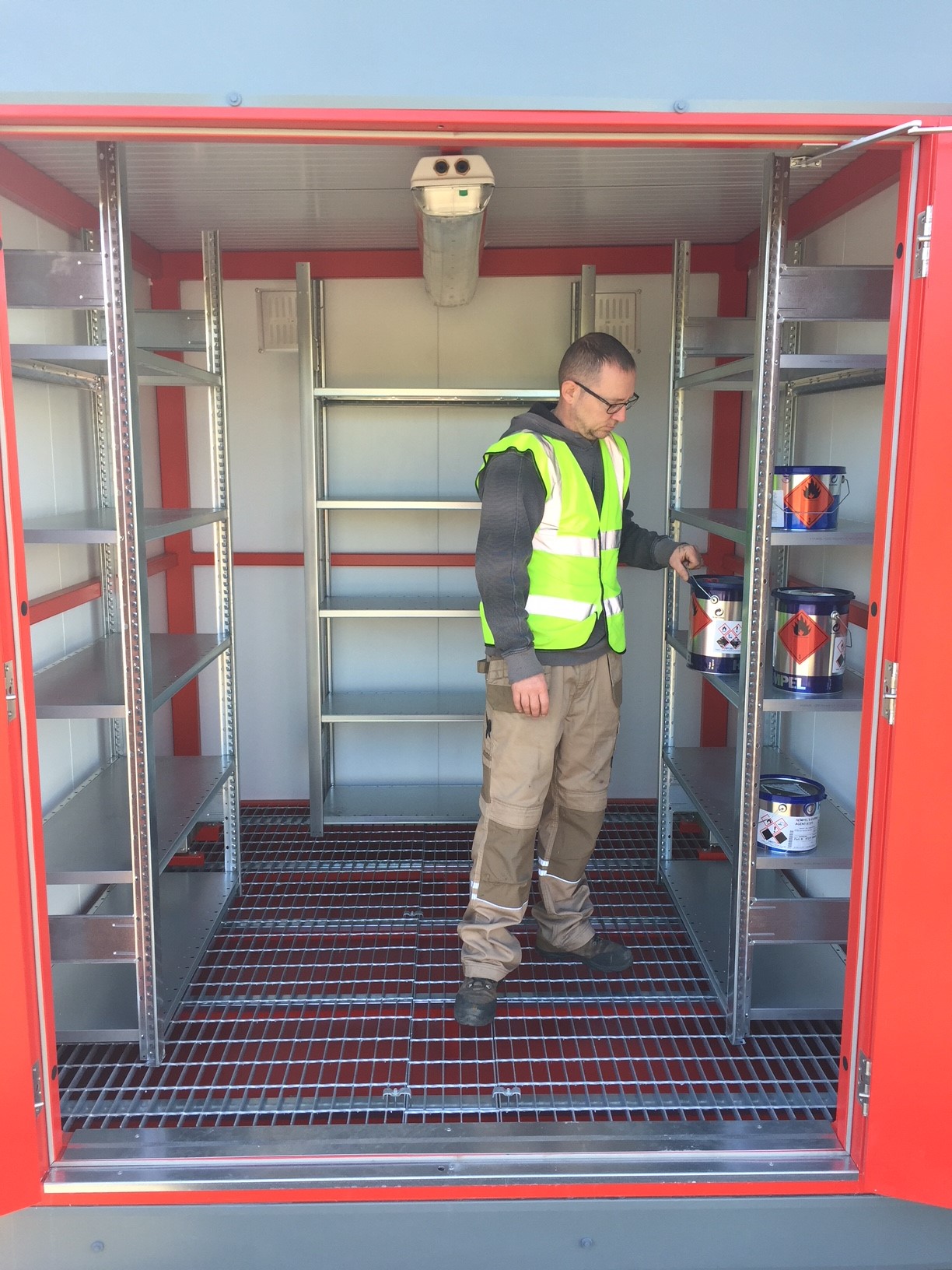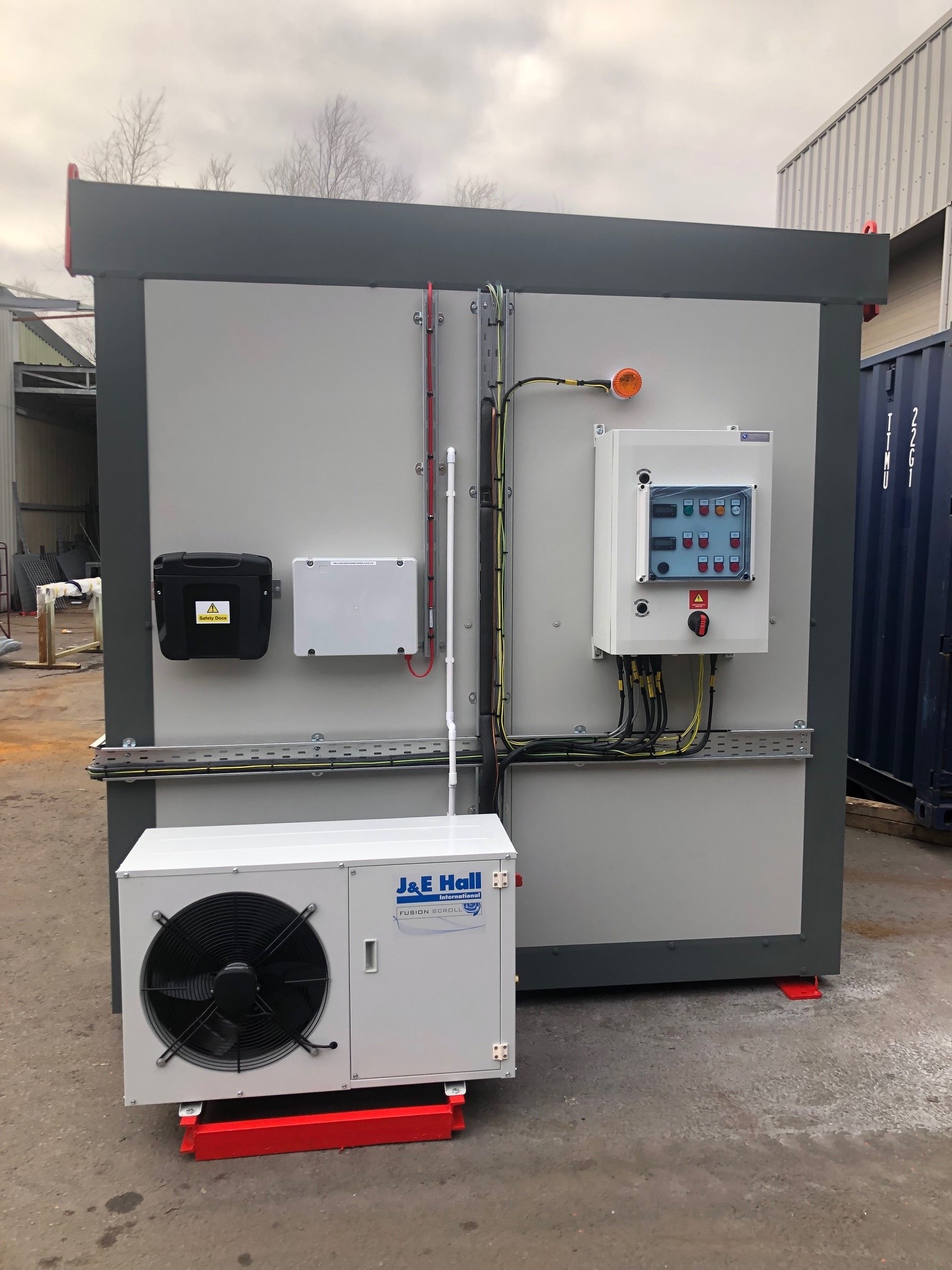In many facilities, the best option for safe chemical storage will be a walk-in chemical store (also known as a COSHH store). The right solution can help resolve issues such as chemical segregation, temperature control, ventilation, and spill containment – without the cost of rebuilding your current storage area. To help you comply with regulations and reduce the risk of accidents, we’ve put together a list of key factors you should consider when designing, specifying and installing your perfect walk-in chemical store.
Location and Access
Depending on the layout of your facility, you might choose to situate your walk-in COSHH store inside or outdoors. Internal storage allows for frequent access, while external storage can free up space on-site and remove dangerous chemicals from heavy traffic areas. When planning where to position your walk-in store, you’ll need to consider distance from populated areas, accessibility for deliveries, and proximity to sources of ignition and emergency exits.
A dedicated walk-in store for flammable materials increases safety by ensuring that a fire on-site does not reach products that would act as an accelerant. If you choose to locate the walk-in store inside, your store should provide a minimum 30 minutes fire protection as per HSE Guideline HS9(G)51.
Size
Your chemical inventory will dictate the size of your store. Depending on the volume of chemicals to be stored and any segregation requirements, you’ll want to allow sufficient space to store chemicals safely, but you may also want to consider potential future storage needs.
Your chemical handling preferences will also impact size. A walk-in COSHH store provides a ventilated space in which staff can open and decant hazardous chemicals without regularly moving products in and out of storage. If applicable, a walk-in chemical store can also allow space to bring a trolley in, facilitating easier transportation and decreasing the risk of spills.
Bunding
When designing your walk-in chemical store, it’s important to select appropriate bunding. Trays should be placed under any flammable, corrosive or hazardous materials to contain any leaks or spills. In the UK, there are specific regulations for bunding which state that the bund should be able to hold 110% of the largest container’s capacity, or 25% of the total volume of all containers, whichever is greater.
Temperature
Accurate temperature control is a vital element of your walk-in chemical store, regardless of whether it is located inside or outside. To determine your climate control requirements, you’ll need to consider the surrounding environment along with the specific temperature requirements of the chemicals you store by referring to the safety data sheet (SDS) specifications.
Using insulation and climate control systems helps prevent chemicals from freezing, which causes them to expand and damage their container, or overheating, which can cause some chemicals to become volatile. Regular humidity monitoring and temperature logging thereby increases employee safety by preventing chemical degradation, as well as maintaining stability and extending the product lifespan by avoiding reactions or spoilage.
Ventilation
To protect staff who need to access walk-in chemical storage, you must ensure appropriate ventilation. This can reduce the build-up of fumes that would otherwise be harmful to operatives or react dangerously with other chemicals, particularly when handling toxic or flammable materials.
When planning your ventilation, you’ll want to consider the required air change rate. Airflow should be based on the number of air changes per hour, with a minimum of 10 air changes per hour for flammable liquids if they are being decanted or mixed in the storage area. Where fumes vent to the external atmosphere, ensure that the system directs the vents to an area away from people and ignition sources.
Regulations
In the UK, walk-in chemical storage is governed by various regulations to maintain the highest safety standards in the workplace. The Control of Substances Hazardous to Health (COSHH) regulations require you to perform a risk assessment and put control measures in place to protect employees.
Compliance with the Dangerous Substances and Explosive Atmospheres Regulations (DSEAR) will also help you to ensure safe handling, storage, and management of hazardous materials on-site and specifically within your walk-in COSHH store.
Designing custom walk-in storage
In some situations, the best way to create the perfect storage for your facility is to design a custom walk-in store. At Safety Storage Systems, we can work with you to ensure the resulting solution meets all your needs without compromising safety.
From appropriate ventilation and air conditioning to sophisticated sensors and alarms, our team can help you design a best fit solution to maintain optimal environmental conditions for your hazardous chemical inventory. Whether you require a unique door location or a chemical store that can be relocated at a later date, we can help.
Our technical in-house experts will assess your needs and design a solution that meets all relevant COSHH and DSEAR regulations. This ensures a cost-effective and safe walk-in solution, delivered to your site and ready for use from day one.
Get in touch with one of our experts to learn more.



